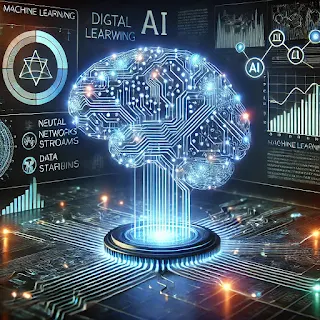The Government of India has launched the "IndiaAI Mission" to promote artificial intelligence (AI). Under this initiative, an investment of $1.25 billion (approximately 10,000 crore) is being made to enhance AI infrastructure, innovation, and AI applications in the public sector. The primary goal of this mission is to establish India as a global leader in AI technology and innovation.(IndiaAI Mission: India's AI Revolution and $1.25 Billion Investment)
Key Initiatives- The IndiaAI Mission comprises several strategic steps, including:1. AI Computing Infrastructure
·
Development of
advanced GPU-based supercomputing resources.
·
Providing AI
model training resources for researchers, startups, and industries.
2. Innovation Centers
·
Establishing
dedicated centers to support AI startups and researchers.
·
Encouraging
practical applications of AI across various sectors.
3. AI in Public Services
·
Enhancing
AI-driven solutions in healthcare, education, agriculture, and justice
systems.
·
Facilitating
data-driven policy-making for improved governance.
4. AI Training & Skill Development
·
Launching
training programs to develop a skilled workforce in AI.
·
Collaborating
with educational institutions and startups to create specialized AI courses.
5. AI Ethics & Regulation
·
Developing guidelines
for transparency and security in AI systems.
·
Implementing
policies to prevent the misuse of AI technologies.
The Potential of AI in India- India possesses a strong foundation for AI development due to several key factors:
·
A large,
young population eager to
acquire technical skills.
·
A robust
digital infrastructure and a
rapidly growing startup ecosystem.
·
Government-led
data initiatives such as Digital
India and India Stack, providing essential data for AI models.
·
Collaborations
with global and domestic tech firms,
accelerating AI advancements.
India's Role in Global AI Competition- India is rapidly progressing in AI
research and innovation:
·
While the
U.S. and China lead the AI sector, India is leveraging its digital
capabilities to compete globally.
·
India's IT
and software industry already has a strong international presence.
·
The rising demand
for AI professionals is positioning India as a competitive player in
the global market.
Challenges and Solutions- Despite its vast potential, the IndiaAI Mission faces some challenges:
1. Data Quality
·
Solution: Standardizing public and private datasets for AI
development.
2. Advancements in AI Research
·
Solution: Increasing investment in AI research and development
(R&D).
3. Ethics and Privacy Concerns
·
Solution: Enforcing stringent data protection laws and ethical
AI guidelines.
Additional Developments
·
AI in
Defense and Security: The
government is exploring AI-driven defense mechanisms for national security.
·
AI-Enabled
Smart Cities: AI technology is
being integrated into smart city projects for improved urban management.
·
Partnerships
with Global AI Leaders: India is
collaborating with AI research centers in Europe and the U.S. to enhance
innovation.
·
AI-Powered
Rural Development: AI tools are
being introduced to revolutionize agriculture and rural governance.
Conclusion- The IndiaAI Mission is a significant step toward positioning India as a global AI powerhouse. With a $1.25 billion investment, the initiative aims to accelerate the development of AI infrastructure, innovation, public services, and human capital. If implemented effectively, this mission has the potential to transform India's digital economy and establish the country as a leader in AI-driven technological advancements.


.jpeg)
.jpeg)







0 Comments